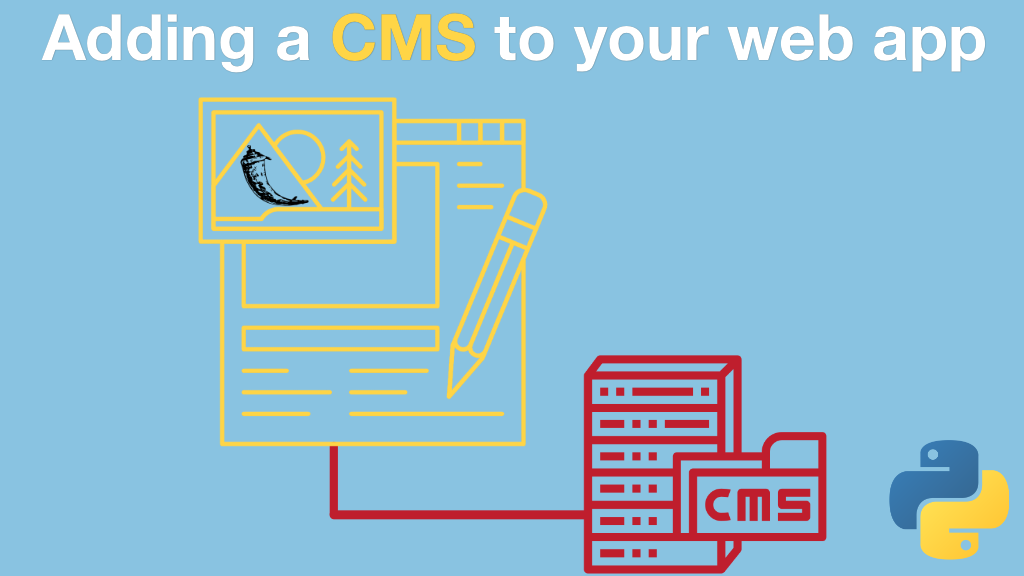This course comes in two flavors. Pick the one that makes you happy:
Are you deciding whether to build a Python web app in Flask/Pyramid or go with a CMS like Wordpress. This can seem like an either/or decision. Either have a great data-driven web app or some clunky PHP thing that marketing and other folks can use to create the site.
But as you'll learn in this course, it's quite easy to add a powerful CMS to your existing web app!
This unique course shows you how to leverage your existing skills in your Python web framework and the huge investment you have made in building a scalable application on the web to add a user-friendly, high-performance CMS capability right on top of that app. You can add these features without modifying your existing site's behavior or (besides startup) the existing code.
If you have wished you could simply sign in to your site and add new functionality, pages, redirects, and more but have scoffed at adding a separate CMS like app layer on the side, this is for you.
We treat you as knowledgeable Flask/Pyramid developers who need to add this cool functionality to empower your team to do more on their own with your site.
We will start from first principles of routing, views, and templates to help you have full control over this CMS functionality, just like you have for the rest of your web app.
In this course, you will:
- Learn how to have data-driven pages and CMS pages coexist in your app
- Add CMS pages to your existing website or a new website you're just launching
- AVOID running a parallel WordPress or Joomla site for this CMS-like functionality
- Take full advantage of the capabilities of your site while working with landing pages and other CMS elements
- Allow marketing teams, business teams, and others to edit site safely and professionally
- Employ the markdown-subtemplate package for extreme performance
- Use markdown-subtemplate's content reuse features for creating shared elements across pages
- Write markdown content and render rich HTML
- Use a proper, full-featured markdown editor on your admin backend for a professional and polished experience for your internal users
- Add the CMS superpower to your web app
- And lots more
This course is for anyone who has or is creating a Flask/Pyramid web application and would like a much better way to fully round out the content of the site.
Yes, every web app will need some data-driven elements. If you ran a book store, there would be a page showing the book details: cover, title, price, summary, etc. But you would also have a contact us page, a privacy policy page, a landing page for a marketing campaign, and on and on. If you want to create all that other content without writing new code and redeploying the site, then this course is for you.
As far as knowledge prerequisites, we assume that anyone taking this course has basic knowledge of:
- Python (you can write a function, create a class, reuse elements via import)
- Flask/Pyramid
- HTML and CSS
In this course, we take an existing web application and add this CMS capability to it. We will start with a clone of the PyPI website (pypi.org) written in Flask.
Then we will systematically add our CMS features to that application. We will add the ability to have **arbitrary redirects in the URL structure (think bit.ly) **as well as full pages (think WordPress). Once we can capture and render these, we will add a deep admin section with a proper markdown editor and other capabilities to the app.
On the internet, content is king. You interact with customers and rank in search engines based on the pages on your site. Take this course and you'll have the most tightly integrated experience for quickly adding content to your app. Your users will not be able to tell the difference between the CMS side and the structured side of your app.
Join this course today! You've got nothing to lose. Every one of our courses comes with a 2-week money-back guarantee.

